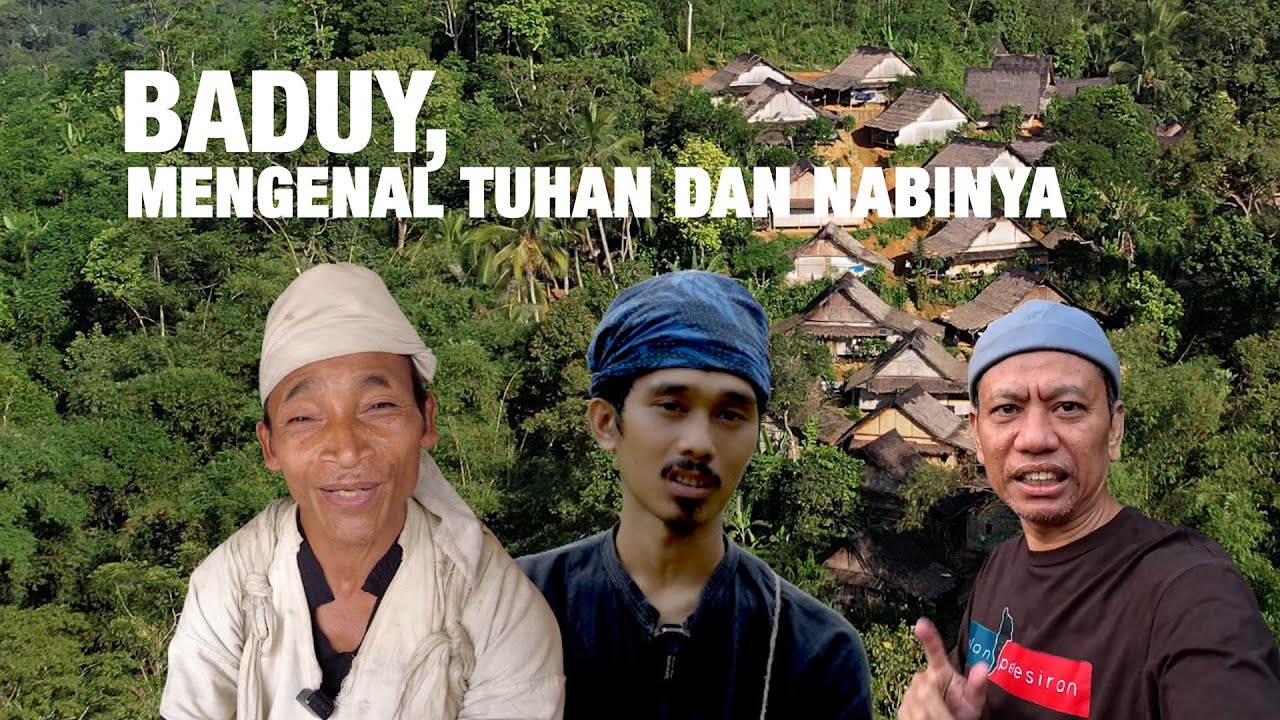URANG KANEKES - Ekspedisi Indonesia Biru #02
Summary
TLDRThis video explores the unique traditions and lifestyle of the Badui people, focusing on the Sapri family. Living in Kanekes, Banten, the family practices sustainable farming, avoiding synthetic fertilizers and pesticides, and relying on local plants for health and hygiene. Despite limited resources and basic living conditions, they maintain a rich cultural heritage, including their distinctive clothing, and a deep connection with nature. Their economy is supported by agriculture and forest products like durian, though they remain officially classified as poor due to government poverty criteria. The video highlights their resilience, self-sufficiency, and spiritual approach to life.
Takeaways
- 😀 The Sapri family lives in a traditional Badui community with 8 children, the oldest being 25 and the youngest being 8 years old.
- 😀 The Badui community follows strict customs that prohibit the use of factory-made soap, toothpaste, and shampoo, instead utilizing local plants like cicakang leaves and honje.
- 😀 The Badui people use natural resources like local water springs and rivers, passing down knowledge of these practices from generation to generation.
- 😀 The region inhabited by the Badui people covers 5,100 hectares, mostly consisting of forests and farmland, and they have been living there since at least the 5th century.
- 😀 The term 'Badui' was introduced during the Dutch colonial era, and the Badui people are also known as Urang Kanekes, who are historically linked to the Kanekes region.
- 😀 There are two main groups within the Badui: the 'Urang Tangtu' (Inner Badui) and 'Urang Penamping' (Outer Badui), distinguishable by their traditional clothing and headgear.
- 😀 According to the 2010 census, there are 11,183 Badui people living in Kanekes Village, Lebak Regency, Banten Province.
- 😀 The Badui people follow a strict land ownership system where land cannot be bought or sold, maintaining a sustainable way of life.
- 😀 They farm organically, avoiding the use of synthetic fertilizers and pesticides, instead relying on natural methods such as using plant leaves for fertilization.
- 😀 Sapri, a member of the Badui community, has a family of 10 and harvests rice and forest products like durian to make up for a shortfall in rice production, highlighting their mixed approach to sustainability.
Q & A
What are some traditional practices of the Badui people mentioned in the script?
-The Badui people practice strict customs, such as avoiding modern products like soap, toothpaste, and shampoo. They also rely on local plants for medicinal and practical purposes, such as using cicakang leaves and honje for shampoo and soap.
How does the Badui community maintain their traditional knowledge?
-The Badui community preserves their traditional knowledge by passing it down through generations, particularly in the utilization of local plants for everyday use and medicine, as well as sustainable farming methods.
How often does the Sapri family wash their hair and use soap?
-The Sapri family washes their hair almost every day, using locally sourced shampoo and soap derived from natural plants.
What is the significance of the 5,100 hectares of land mentioned in the script?
-The 5,100 hectares of land represent the traditional Badui territory, which includes forests and fields, and is vital for their agriculture, natural resource management, and cultural preservation.
Why is the term 'Badui' used to describe this community?
-The term 'Badui' is believed to have been used during the Dutch colonial period, as researchers compared the Badui community to nomadic Bedouin groups in Arabia. Some sources, however, connect the name to a hill in the Kanekes region.
What distinguishes the 'Urang Tangtu' from the 'Urang Penamping' in the Badui community?
-The 'Urang Tangtu' (Badui Dalam) are the core, more traditional members of the Badui, while the 'Urang Penamping' (Badui Luar) are those who live on the periphery. They are distinguishable by their clothing and headbands.
What is the Badui people's stance on selling land?
-The Badui community does not allow the sale of their land, as their traditional land ownership system is protected by their cultural rules, and the land cannot be bought or sold.
How do the Badui people practice sustainable farming?
-The Badui practice organic farming, avoiding the use of artificial fertilizers and pesticides. They rely on natural materials like plant leaves for fertilizer and practice crop rotation to maintain soil quality.
How does the Badui community view wealth and poverty?
-The Badui community defines wealth based on sustainability and living in harmony with nature. Despite their self-sufficiency, they are classified as poor by government standards due to the lack of modern amenities like concrete floors, walls, electricity, and toilets.
How does the Sapri family supplement their income?
-The Sapri family supplements their income by selling durian fruit from their 40 durian trees. The durians are sold locally, with prices varying depending on the size and market demand.
Outlines

This section is available to paid users only. Please upgrade to access this part.
Upgrade NowMindmap

This section is available to paid users only. Please upgrade to access this part.
Upgrade NowKeywords

This section is available to paid users only. Please upgrade to access this part.
Upgrade NowHighlights

This section is available to paid users only. Please upgrade to access this part.
Upgrade NowTranscripts

This section is available to paid users only. Please upgrade to access this part.
Upgrade NowBrowse More Related Video

Kisah Suku Baduy Menjaga Tradisi di Tengah Arus Zaman

BADUY, Cara Ibadah Orang Baduy Mengenal Tuhan dan Nabinya

Masyarakat Suku Baduy, Tradisi dan Kearifan Lokalnya | Fun Fact Banten

THE WONDERFUL NATURE OF BADUY

Sparkol Videoscribe | Batik Baduy Sebagai Aset Budaya Indonesia || Novi Nurmalasari

TANAH BADUY - Ekspedisi Indonesia Biru #01
5.0 / 5 (0 votes)